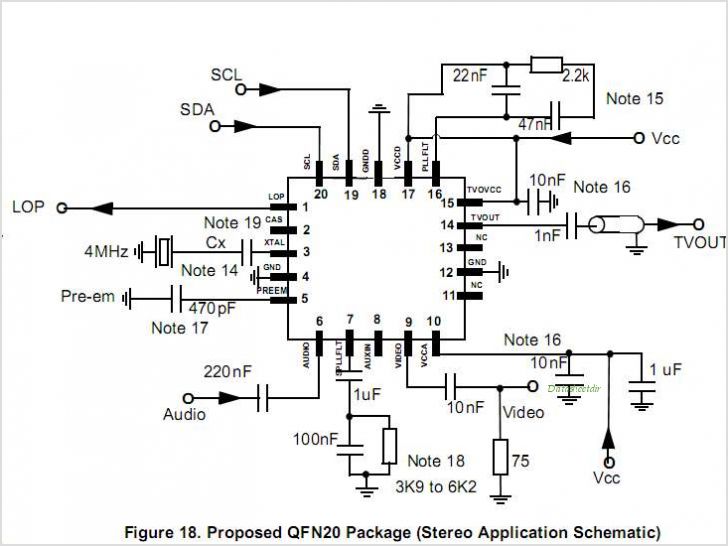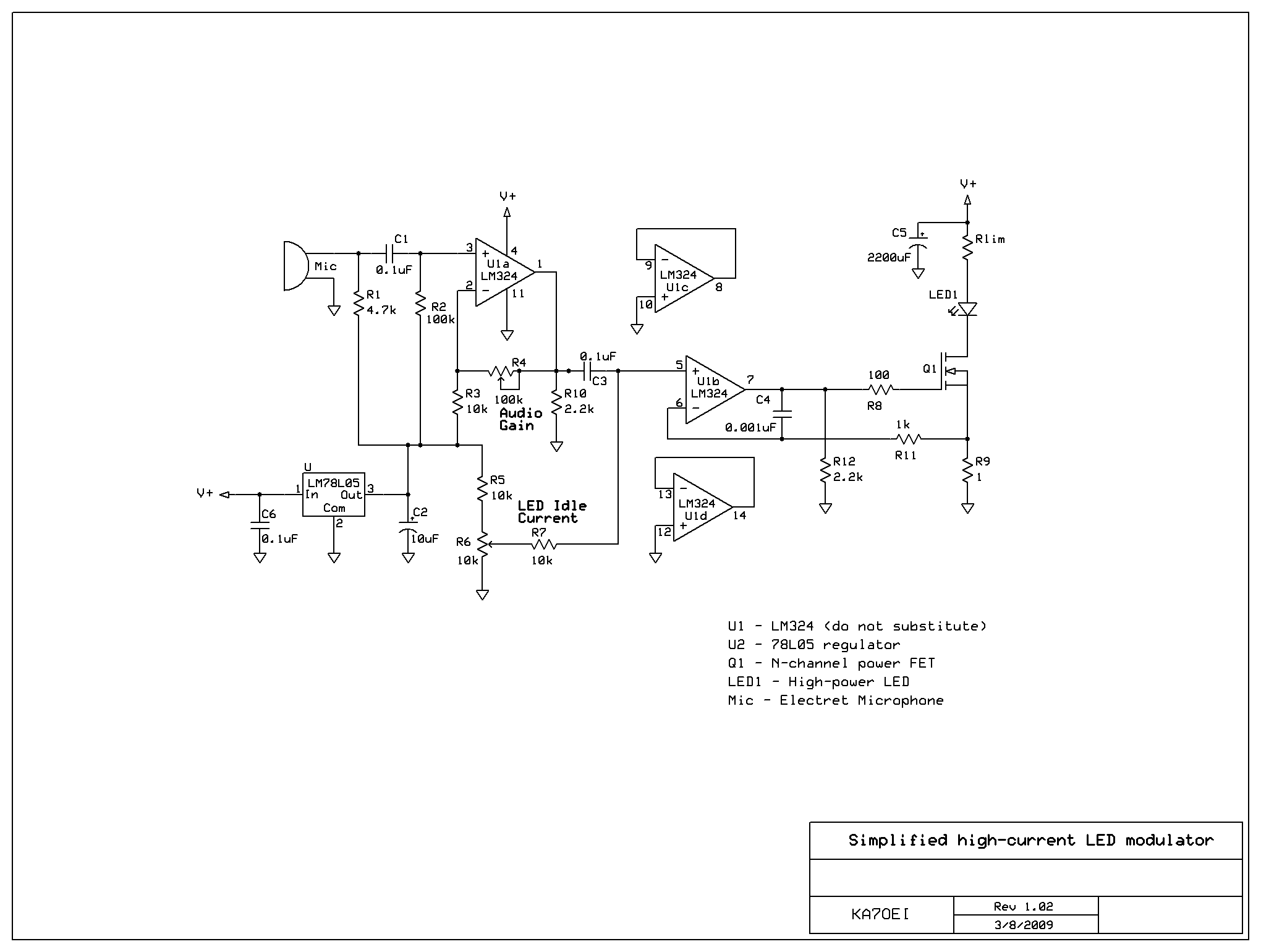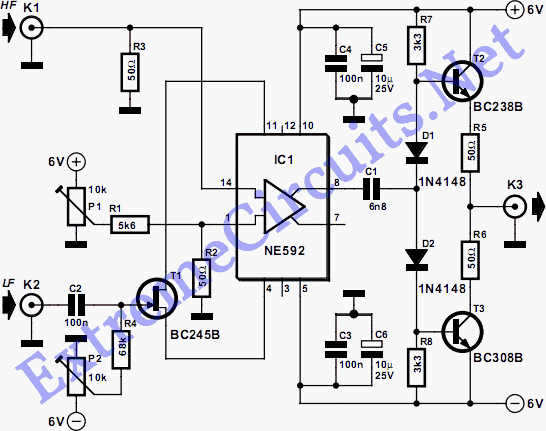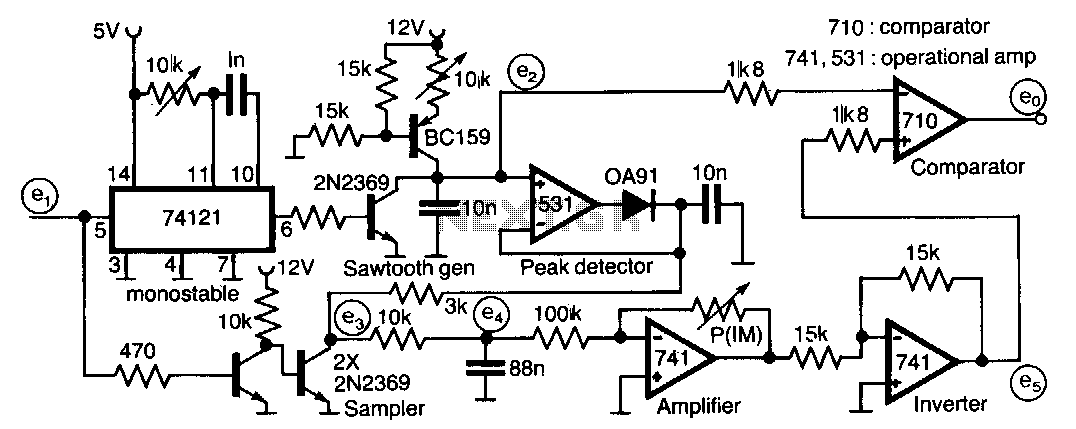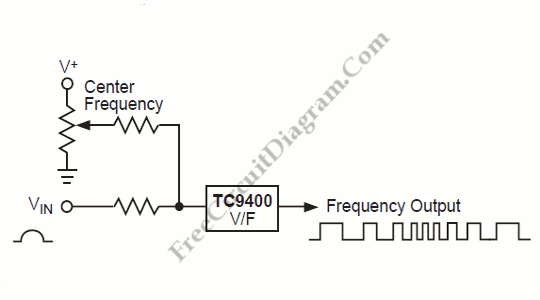
Pulse-Width Modulator
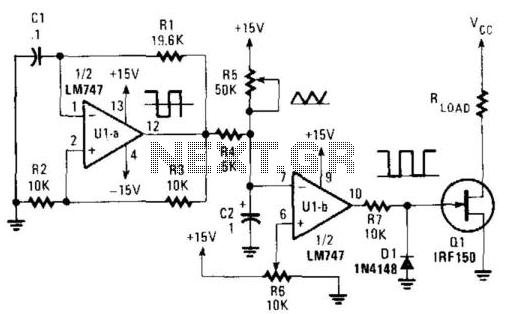
This circuit enables the effective power delivered to a load to be regulated by adjusting the duty cycle of the on/off ratio of the load current. The switching circuit does not dissipate any power. The operational amplifier U1A generates a bipolar square wave, which is then integrated into a triangular wave by the resistor R4 and capacitor C2. A reference voltage from resistor R6 is supplied to a comparator, which also receives the triangle wave from capacitor C2. By modifying the reference voltage (R6), the output waveform becomes a variable-width pulse that drives transistor Q1. Resistor R6 regulates the on/off ratio and consequently the power supplied to the load. Resistor R5 establishes the offset of the triangular wave across capacitor C2.
This circuit is an example of a pulse-width modulation (PWM) controller, which is commonly used in various applications for power management and control. The core component, U1A, is configured as an integrator, converting the square wave input into a triangular waveform. The integration process takes place over time, where R4 and C2 determine the frequency and amplitude characteristics of the triangular wave.
The comparator's role is crucial, as it compares the triangular wave against the adjustable reference voltage provided by R6. This comparison yields a PWM signal whose duty cycle is directly influenced by the value of R6. As the reference voltage is increased, the comparator will produce a narrower pulse width, resulting in reduced power delivered to the load. Conversely, decreasing the reference voltage will widen the pulse, increasing the load power.
Transistor Q1 acts as a switch controlled by the PWM signal. It modulates the current flowing to the load in accordance with the duty cycle of the PWM signal, allowing for precise control over the load's power consumption without significant energy loss in the switching components.
Resistor R5 serves to set the baseline or offset of the triangular wave generated across capacitor C2, ensuring that the waveform remains within the operational limits of the comparator. This offset adjustment is important for maintaining stable operation and avoiding unwanted oscillations or instability in the PWM output.
Overall, this circuit design illustrates an efficient method for controlling power in a load with minimal energy loss, making it suitable for applications such as motor speed control, light dimming, and other scenarios where variable power delivery is essential. This circuit allows the effective power in a load to be controlled by varying the duty cycle of the on/off ratio of l oad current. No power is dissipated in the switching circuit. U1A generates a bipolar square wave that is integrated into a triangle by R4 and C2. Reference voltage from R6 is fed to a comparator. The triangle wave on C2 goes to the comparator as well. By varying the reference voltage (R6), the output waveform is a variable width pulse, that drives Ql. R6 controls on/off ratio and therefore load power. R5 sets the offset of the triangle wave across C2. 🔗 External reference
This circuit is an example of a pulse-width modulation (PWM) controller, which is commonly used in various applications for power management and control. The core component, U1A, is configured as an integrator, converting the square wave input into a triangular waveform. The integration process takes place over time, where R4 and C2 determine the frequency and amplitude characteristics of the triangular wave.
The comparator's role is crucial, as it compares the triangular wave against the adjustable reference voltage provided by R6. This comparison yields a PWM signal whose duty cycle is directly influenced by the value of R6. As the reference voltage is increased, the comparator will produce a narrower pulse width, resulting in reduced power delivered to the load. Conversely, decreasing the reference voltage will widen the pulse, increasing the load power.
Transistor Q1 acts as a switch controlled by the PWM signal. It modulates the current flowing to the load in accordance with the duty cycle of the PWM signal, allowing for precise control over the load's power consumption without significant energy loss in the switching components.
Resistor R5 serves to set the baseline or offset of the triangular wave generated across capacitor C2, ensuring that the waveform remains within the operational limits of the comparator. This offset adjustment is important for maintaining stable operation and avoiding unwanted oscillations or instability in the PWM output.
Overall, this circuit design illustrates an efficient method for controlling power in a load with minimal energy loss, making it suitable for applications such as motor speed control, light dimming, and other scenarios where variable power delivery is essential. This circuit allows the effective power in a load to be controlled by varying the duty cycle of the on/off ratio of l oad current. No power is dissipated in the switching circuit. U1A generates a bipolar square wave that is integrated into a triangle by R4 and C2. Reference voltage from R6 is fed to a comparator. The triangle wave on C2 goes to the comparator as well. By varying the reference voltage (R6), the output waveform is a variable width pulse, that drives Ql. R6 controls on/off ratio and therefore load power. R5 sets the offset of the triangle wave across C2. 🔗 External reference
